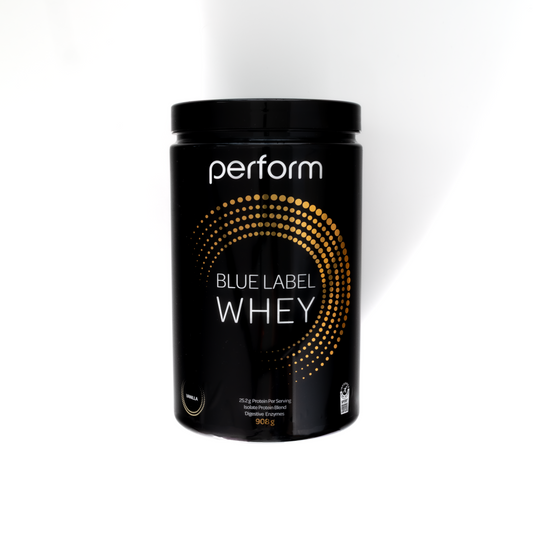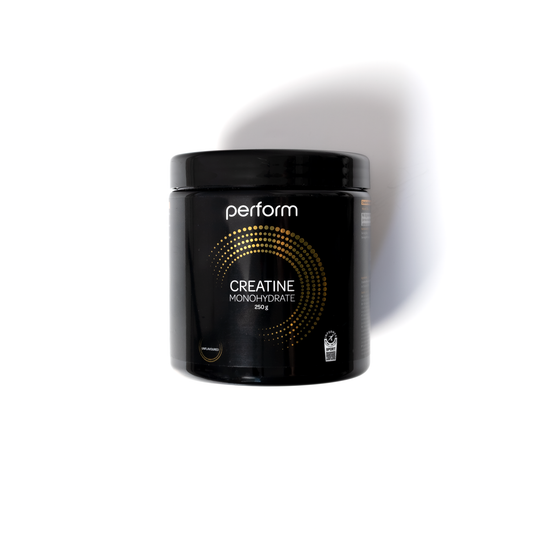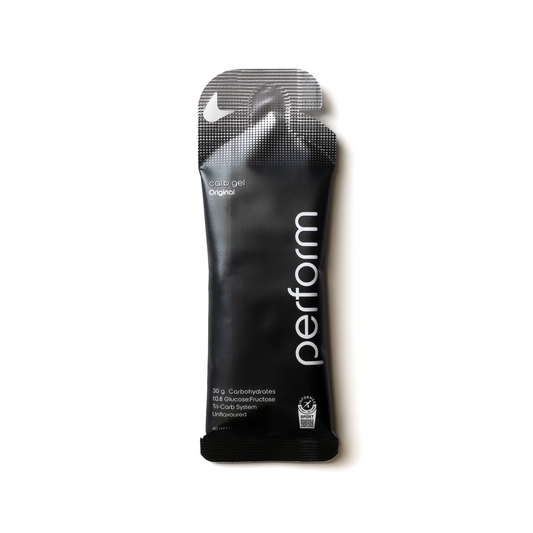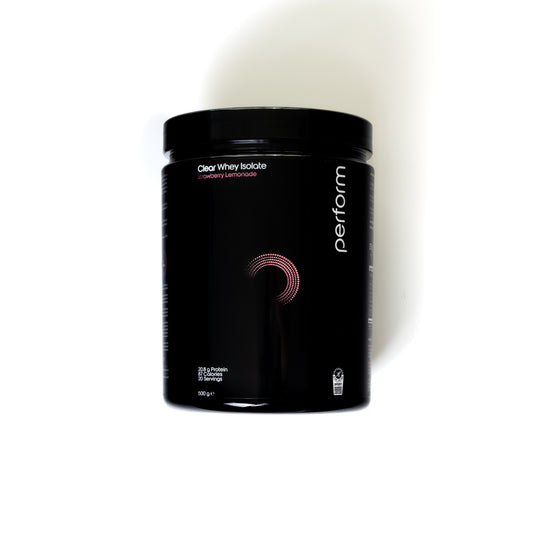Endurance training places a significant demand on the body. Whether preparing for a marathon, triathlon, or long-distance cycling, athletes need a sustained energy supply to maintain performance over extended periods. While structured training plans and detailed recovery routines are essential, a proper nutrition and fuelling strategy is equally critical for optimised performance. Without adequate nutritional support, athletes may deal with increased fatigue, reduced performance and the risk of hitting “the wall”- a state of glycogen depletion. (1)
Through understanding the science of endurance fuelling, athletes can avoid common mistakes. Refining your approach to nutrition and fuelling strategy can be the key to unlocking improved performance and a successful race day.
The Science of Endurance
Endurance exercise places sustained stress on the body’s energy systems. The preferred and primary fuel source during prolonged activity are carbohydrates stored as glycogen, found in muscles and the liver. This is the most efficient energy source during moderate to high-intensity efforts. However, the body’s glycogen stores are limited to approximately 400-600 grams depending on factors like bodyweight and training status. These stores can be depleted in as little as 90-120 minutes. (2)
Once these glycogen stores are reduced or depleted, energy production decreases, rate of perceived exertion increases, and overall performance deteriorates. While the body can shift to using fat as an energy source, it is typically inferior to carbohydrates when trying to meet the energy demands of endurance activities. (3) This is often referred to as “bonking” or “hitting the wall”. This physiological breakdown and deteriorating performance underpin the importance of proper fuelling.
To avoid this glycogen depletion and subsequent performance dips, athletes must ensure they have strategically planned carbohydrate intake. This is not just limited to pre-workout fuelling but intra-workout fuelling too.
Before a session it is recommended to consume 1-4g of carbohydrate per kg of bodyweight 1-4 hours before the session to top up glycogen stores. (4) During exercise lasting longer than 60-120 minutes, athletes should aim to consume 30-60g of carbohydrates per hour and up to 90g per hour for higher-intensity or ultra-endurance events. (1)
Not only is the amount important but the timing is also crucial. Rather than waiting for fatigue to set in, carbohydrates should be consumed at regular intervals starting early in the session. The proper implementation of intra-session fuelling can help:
· Stabilise and maintain blood glucose levels
· Ensure sufficient stores of glycogen
· Reduced perceived effort
· Improve performance
The Role of Carbohydrates: Type, Absorption, and Timing
When it comes to fuelling endurance performance, not all carbohydrates are created equal. The carbohydrate type can vary and can serve different purposes when fuelling your training.
Simple carbohydrates such as glucose and fructose are fast digesting. This makes them ideal for use intra-workout. Complex carbohydrates on the other hand are slower to digest. This makes them better suited to pre-race nutrition or even recovery windows. In terms of endurance activity, quick absorption and minimal gut stress is the goal.
One way in which to increase carbohydrate absorption is to combine glucose or maltodextrin with fructose. This allows for increased absorption rates and enables greater fuelling alongside minimal gut discomfort. (5)
Common Fuelling Mistakes
1- Underestimating Carbohydrate Needs
Many endurance athletes will not consume enough carbohydrates before or during training and racing. This can create premature glycogen depletion and avoidable fatigue. What works for one athlete may not work for the other. Intensity and duration amongst a host of factors affect what your body will need.
2- Beginning to Fuel too Late into the Session
Waiting to fuel until fatigue sets in will mean you are too late. By this point, glycogen stores are already partially depleted. This fatigue means that digestion slows down making it harder to absorb any further nutrients. This makes any further fuelling attempts less effective.
3- Not Practicing in Training
Race-day nutrition should not be left to chance. Athletes may often try new fuelling strategies and products the day of an event. This can lead to unforeseen problems such as digestive and gastrointestinal issues and consequentially underperformance. Just like you practice pacing and splits, you must also practice your fuelling. You can train your gut to improve tolerance and carbohydrate absorption during exercise. (6) This is something that happens over time in a training block.
4- Neglecting Hydration
Proper fuelling is not just about carbohydrates. Fluid and electrolyte balance are also critical. If dehydrated, carbohydrate absorption can be reduced. Proper electrolyte balance can also improve fluid retention and reduce risk of cramping. It is important to acknowledge the variance in individual sweat rates and how this can change electrolyte needs on an individual basis (7)
Fuelling as a Performance Lever
The takeaways are clear.
- Glycogen is your primary fuel source during prolonged exercise and must be maintained
- Carbohydrate intake must be planned, timed and tailored
- Mistakes like under fuelling, lack of practice, and poor hydration can hinder performance and are easily avoidable
Fuelling is not just about eating more but rather eating smart. Through acknowledging your body’s needs and applying an evidence-based approach to your nutrition, you lay the foundations and give yourself the best chance to go further and faster.
References
1- Cermak, N. M., & van Loon, L. J. C. (2013). The use of carbohydrates during exercise as an ergogenic aid. Sports Medicine, 43(11), 1139–1155. https://doi.org/10.1007/s40279-013-0079-0
2- Burke, L. M., Hawley, J. A., Wong, S. H. S., & Jeukendrup, A. E. (2011). Carbohydrates for training and competition. Journal of Sports Sciences, 29(S1), S17–S27. https://doi.org/10.1080/02640414.2011.585473
3- Spriet, L. L. (2014). New insights into the interaction of carbohydrate and fat metabolism during exercise. Sports Medicine, 44(S1), S87–S96. https://doi.org/10.1007/s40279-014-0154-1
4- Thomas, D. T., Erdman, K. A., & Burke, L. M. (2016). Position of the Academy of Nutrition and Dietetics, Dietitians of Canada, and the ACSM: Nutrition and Athletic Performance. Journal of the Academy of Nutrition and Dietetics, 116(3), 501–528. https://doi.org/10.1016/j.jand.2015.12.006
5- Jentjens, R. L., Achten, J., & Jeukendrup, A. E. (2004). High oxidation rates from combined carbohydrates ingested during exercise. Medicine & Science in Sports & Exercise, 36(9), 1551–1558. https://doi.org/10.1249/01.mss.0000139805.60545.73
6- Costa, R. J. S., Miall, A., Khoo, A., Rauch, C., Snipe, R., & Camoes-Costa, V. (2017). Gut-training: the impact of two weeks of repetitive gut-challenge training on gastrointestinal status, glucose availability, and running performance. Applied Physiology, Nutrition, and Metabolism, 42(5), 547–557. https://doi.org/10.1139/apnm-2016-0423
7- Sawka, M. N., Burke, L. M., Eichner, E. R., Maughan, R. J., Montain, S. J., & Stachenfeld, N. S. (2007). Exercise and fluid replacement. Medicine & Science in Sports & Exercise, 39(2), 377–390. https://doi.org/10.1249/mss.0b013e31802ca597





